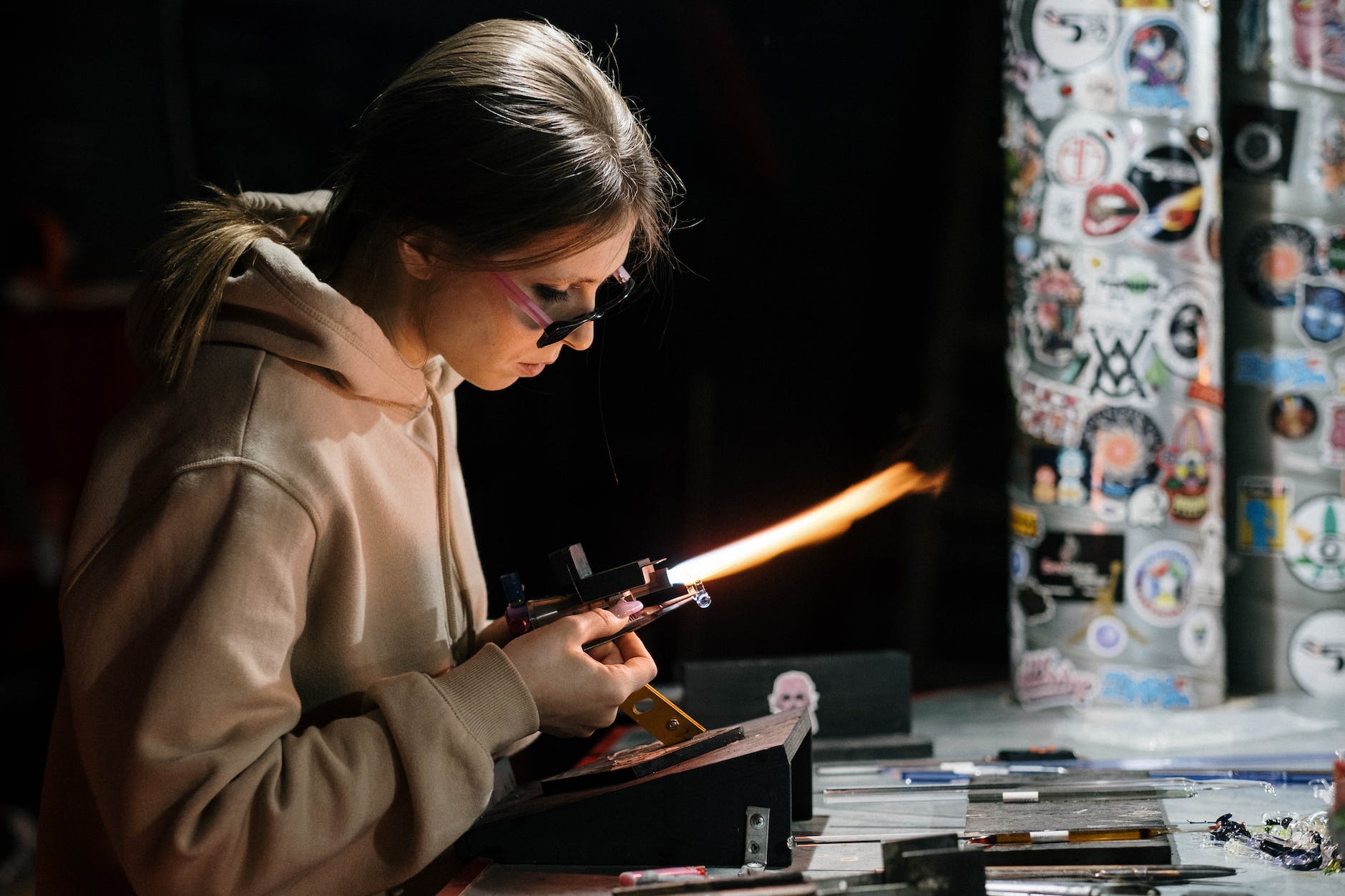The Transformative Power of Fire: Heat as an Artistic Medium in Glassblowing
The intricate craft of glassblowing relies foremost on harnessing high heat to manifest creative visions. Mastering fire allows glass artisans to shape viscous molten material into stunning works of utility and beauty. Examining glassblowing’s pyrotechnic foundations provides insight into how skilled artists employ extreme temperatures as an expressive force.
The Science of Transforming Sand to Glass
Heating raw silicon dioxide sand to over 3,000°F initiates an extraordinary molecular change. The materials become a viscous liquid capable of freeform shaping through inflation, tools, and centrifugal force before re-hardening into solid glass. Physics and chemistry govern the remarkable process – heating silica past transition states lowers viscosity exponentially, allowing molten flow.
Through exquisite thermal control, glassblowers shape this fleetingly plastic state into their imaginative works. Their art relies on physics principles guiding how heat, energy, and matter interact.
The Furnace as Creative Heart
The furnace forms the fiery core where raw materials transform from inert grains into glowing molten magic. Advanced models achieve over 2,300°F temperatures through insulation, convection, and sensors to hold glass in the narrow viscous phase ideal for gathering onto blowpipes. This alchemical hearth provides the primal heat from which all glass creations emanate. The furnace literally manifests creative power.
Gathering From the Melt
In one of glassblowing’s most thrilling moments, artists gather a molten blob onto their blowpipe through a graceful dip and swirl in the crucible. The ability to safely transfer 2,000°F liquid glass in a precise volume represents a foundational skill. The gather sets the color palette and maximum volume for the piece based on furnace heat. This hot mass holds boundless potential for expression.
Strategic Heat Control Throughout Process
Once gathered, heat management becomes key. The glassblower continuously monitors temperature distribution across the expanding glass, directing heat to areas needing softness while firming up cooler sections using compressors. Ensuring even expansion without weak spots requires attentive temperature modulation. Artistry arises from intuitively guiding heat’s effects on glass.
Flameworking Intimacy with Fire
The small-scale torch flameworking process relies entirely on direct manipulation of paired fire and glass. The instant thermal response of glass rods and tubing under flame provides immediate molten fluidity to shape intricate beads, sculptures, and vessels. Hand coordination and heat sensitivity fuse in flameworking’s mesmerizing fire dance.
Cooling and Annealing Completes Creation
After blowing, precise annealing prevents lasting thermal trauma. Glass’ unstable molecular structure remains vulnerable to fracturing without gradual temperature decline in ovens. Programmed cooling over days at declining temperatures releases pent-up internal stresses from formation. Flawless annealing enables pristine clarity and resilience prized in fine glass art.
Through each step from molten inferno to room temperature treasure, heat provides the essential ingredient for visual alchemy. The glassblower’s art means mastering fire’s power to capture ephemeral beauty within an imperishable vessel. Their works illuminate heat’s wondrous capacity for birthing art from raw earthly matter.
